What is the male gaze? I believe everyone is familiar with it. The male gaze refers to how women are often shown in media from a man’s point of view, women are objected by them, they are also seen as X objects for the pleasure of a men. This concept was introduced by Laura Mulvey in her article “Visual Pleasure and Narrative Cinema” (1975). Meanwhile, she believed that films often describe women in a way that reflects male desires and power.
Man act and women appear. Men look at women. Women watch themselves being looked at.
From John Berger’s “Ways of Seeing”
Typical case
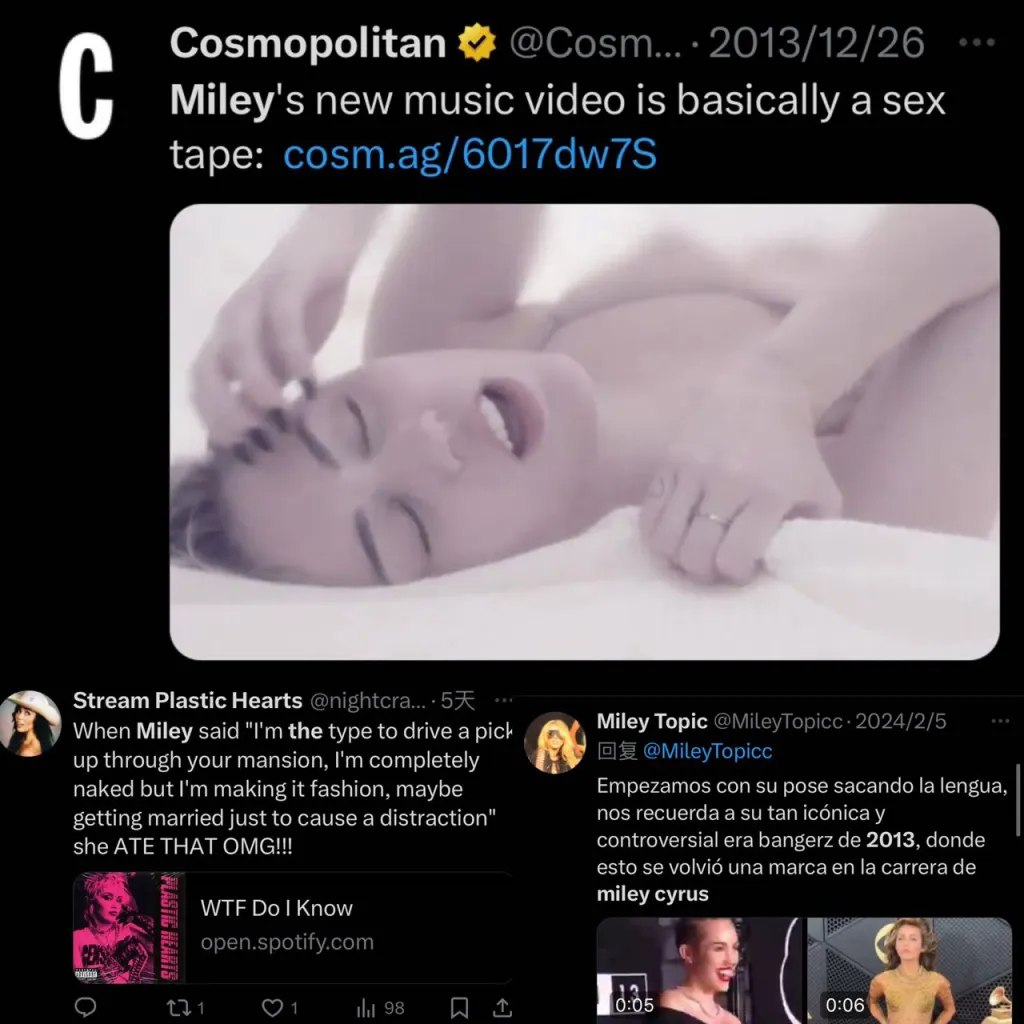
It also highlighted the impact of the male gaze. By focusing on their appearance, the media limits how women can express themselves and this situation reflects a larger problem in society that women’s success is often related to whether they meet certain aesthetic standards rather than their true abilities or achievements.
A relevant case is Miley Cyrus’s 2013 Wrecking Ball performance, in the music video, Cyrus appears nude while swinging on a wrecking ball, this has become the focus of attention for multi-media. Her performance aims to convey the fragility in emotions and the heartbreak in relationships. However, the media focuses more on her appearance than her music. Many headlines are related to her provocative clothing and behavior, rather than appreciating her song and art forms.


The male inner gaze on social media
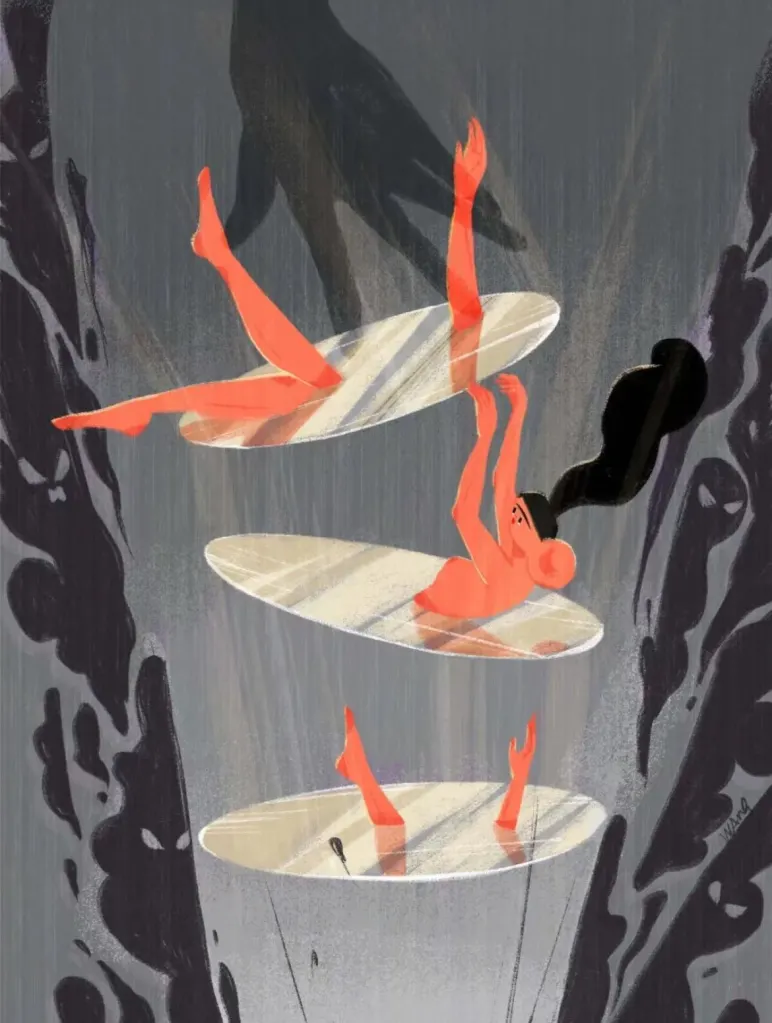
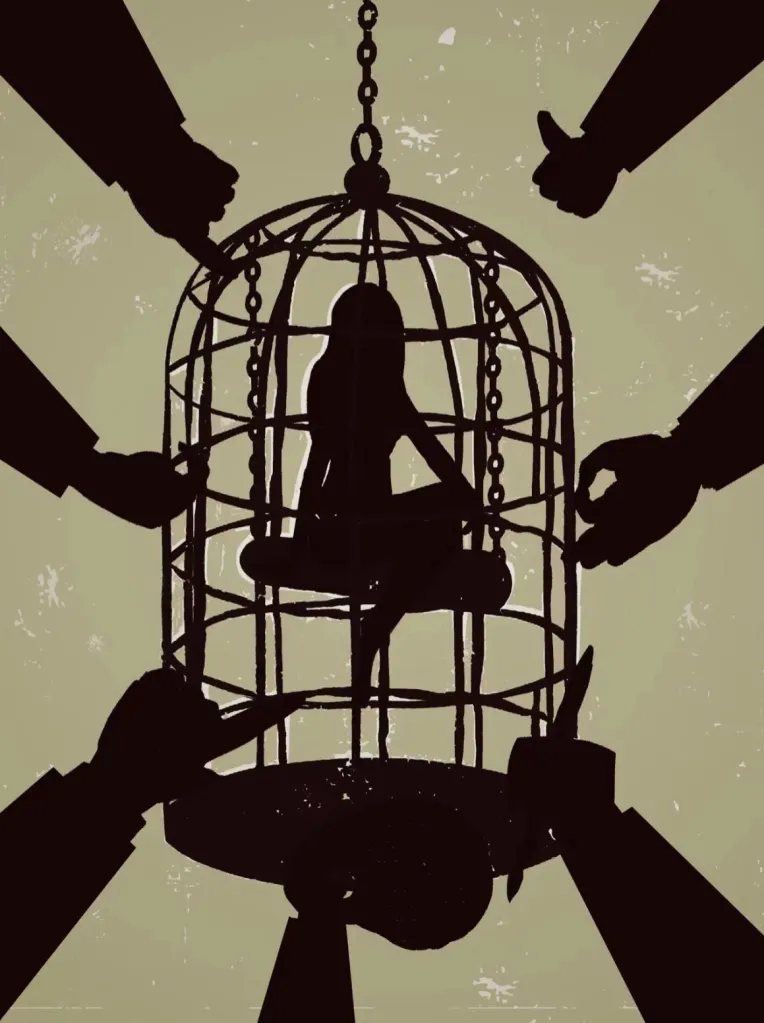
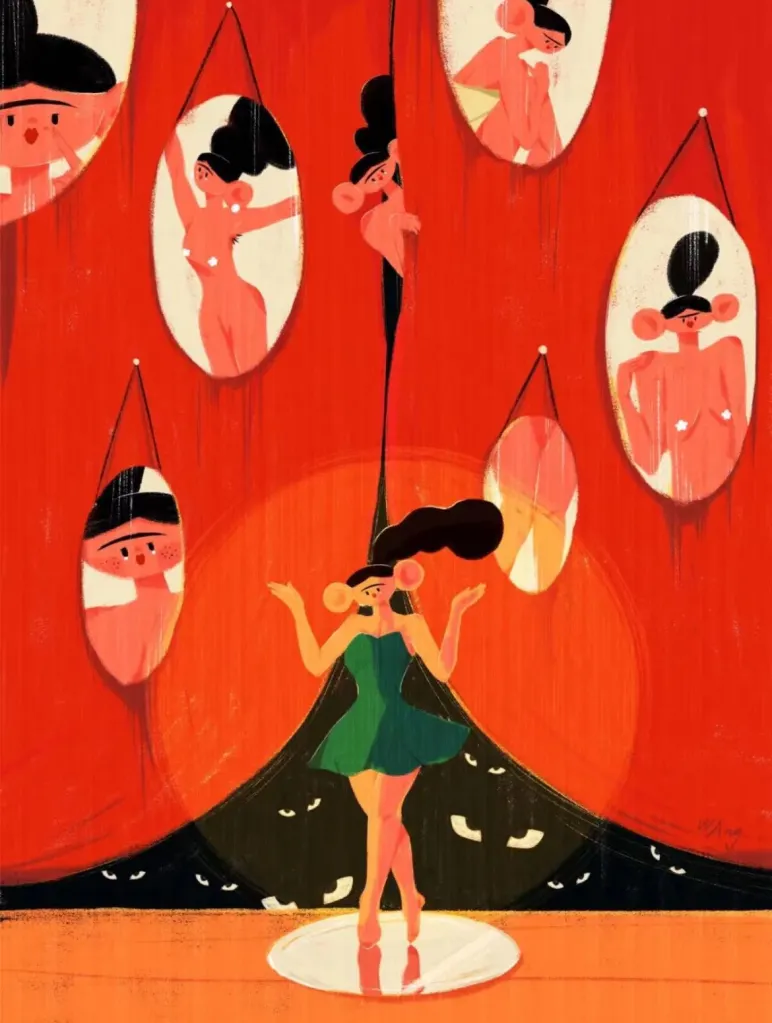
Young women often unknowingly change their appearance without realizing it, trying to match male ideas of beauty and femininity. The male gaze delivers the underlying message that if you look like that or dress like that, you can get male’s attention and love. It influences how women are viewed by other men, women and themselves, which may leads to higher level of anxiety, depression, lower level of self esteem and female competition. Nowadays, trends like the “clown” makeup style or overly sexualized selfies, even though it called “free choices”, it still follow gender rules made by the male gaze. These situations shape women are expected to look and act, both in public and in private. For example, I once had a male friend who would send me a video every month, and the video content was that the breasts would get smaller if you didn’t eat breakfast for a long time. What a stupid male gaze!
Critical thinking
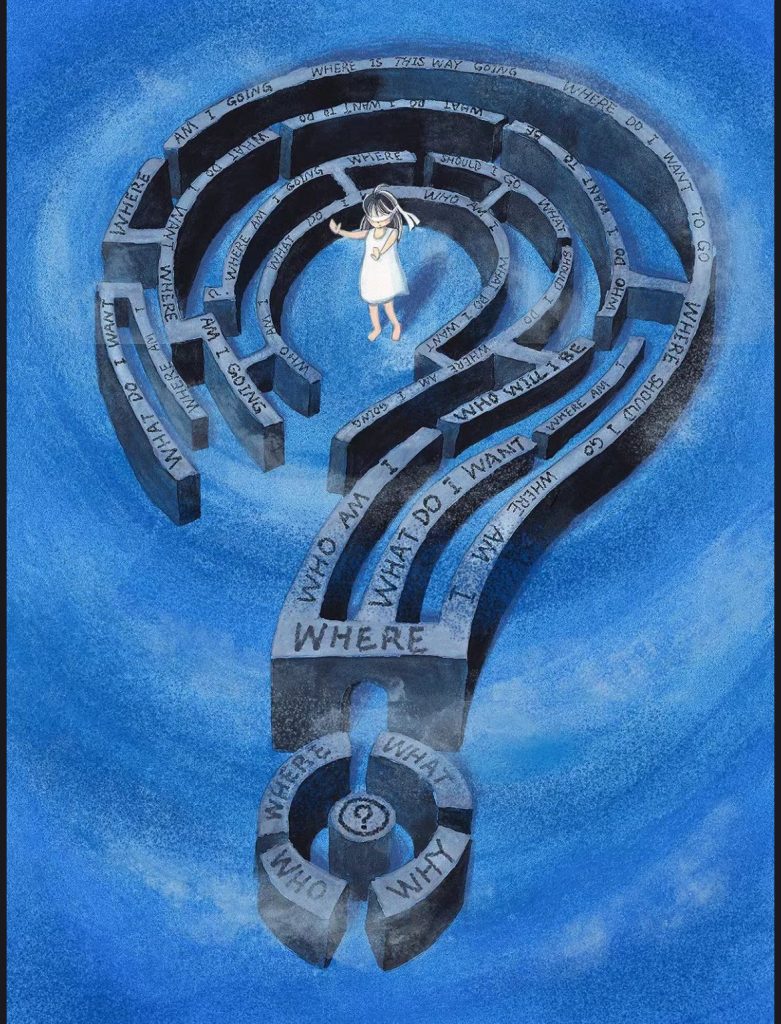
In class, we discussed how gender and media are closely linked. It’s not hard to find that platforms like Instagram and TikTok encourages posts that fit certain beauty standards, many of them are reflected by male desires. Even when women choose to post, their choices can still be shaped by these rules.
However, social media can also be a tool to fight against the male gaze. Many women use these platforms to promote body positivity and challenge traditional gender roles. By doing this, they create spaces where women can express themselves in more free and powerful ways (Gill, 2007).
To challenge male control on social media, users should think about why they post these content. Are they sharing it just because it feels right to them, or because it matches society’s beauty rules? Users can also support posts that show women in positive ways. This can help change how women are shown online.(Durham,2010). By this way, users can make social media a better and more inclusive place.
Conclusion
As a young women, I see how the male gaze affects my friends and my experience on social media. This focus on appearance can limit the way we express ourselves. It is important to pay attention to and resist male gaze, so we can create an online space where everyone can freely be themselves, just themselves, rather than being satisfied with narrow beauty standards.

When we know that the male gaze cannot be avoided in a patriarchal society, the only thing we can do is to break the shackles and express ourselves.
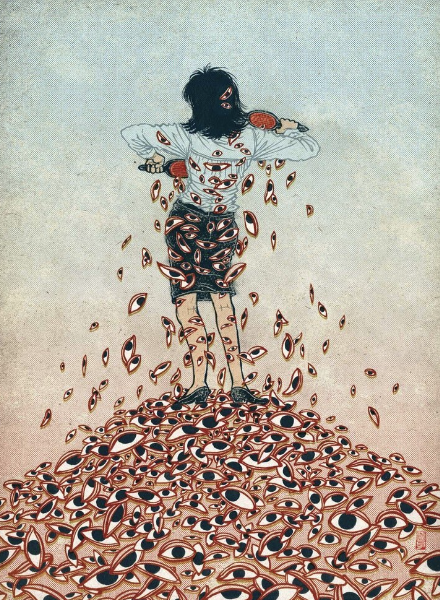
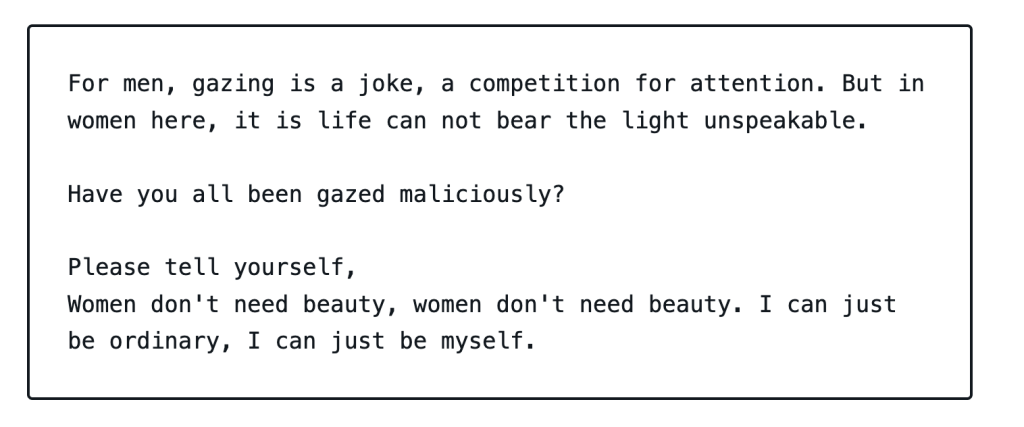
Reference
- Durham, M. G. (2010). The Lolita Effect: The Media Sexualization of Young Girls and
What We Can Do About It. Overlook Press. - Feminism in India. (2022). Male Gaze: Understanding The Politics of Seeing and Being
Seen. Feminism in India. - Gill, R. (2007). Postfeminist Media Culture: Elements of a Sensibility. European Journal of Cultural Studies, 10(2), 147-166.
- Mulvey, L. (1975). Visual Pleasure and Narrative Cinema. Screen, 16(3), 6-18.
- https://images.app.goo.gl/ddF7fV7sfQ4LtD3b8
- https://images.app.goo.gl/yngg5mwUacz894nP9
- https://images.app.goo.gl/KtkMC2ULV1YA86Yr5

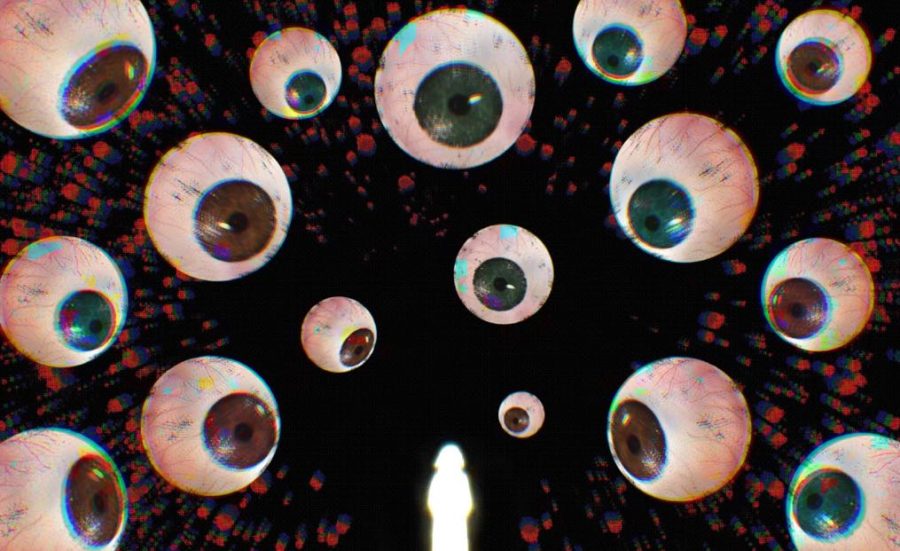
Through your blog, I learned more about where the term “male gaze” came from and why it is so closely related to gender and power. This part of the narrative is very clear! You also emphasize the concept of the “malicious gaze” and analyze the embodiment of the aggression and power imbalance of the male gaze in modern society. This expanded discussion of the “malicious gaze” made me realize that the expression of the gaze has been transformed, not only on the visual level but also on the emotional and psychological level.
I appreciate your dissection of the power structure behind this “malicious gaze.” One small suggestion is that in some parts of the exposition, you can further deepen the specific representation of the “male gaze” in different cultural and historical contexts. For example, the article mainly focuses on the male gaze in Western media, however, the male gaze in other cultures may take on different forms and influences.